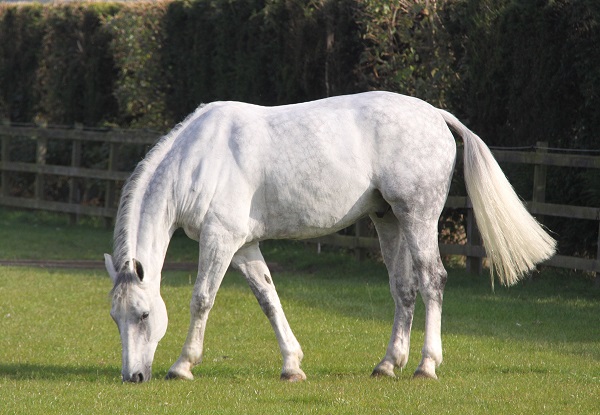Posted: 14th February 2019 | Back to news feed

With the days starting to show signs of getting a little longer, for most of us this signals that spring is perhaps finally on the way. This is good news and as many owners will start to think about increasing turnout time for stabled horses, it is also a good time to consider how to manage this change. Spring and increased grass growth bring a few potential problems for domesticated horses.

AVOID ABRUPT CHANGES IN FORAGE
This is one of the basic rules of feeding horses to avoid GI problems! In the same way that you should not switch from one hay straight on to another (but gradually mix the old and increasing amounts of the new for 10-14 days) avoid making sudden changes form hay/haylage to pasture as this can be a risk for COLIC and/or LAMINITIS due to disturbance in hindgut bacteria in particular. So as an example, if your horse is currently stabled with 8h turnout on poor pasture, as the grass starts to flourish it may be sensible to significantly reduce time at pasture or consider other ways of reducing intake (e.g. grazing muzzles, strip grazing, etc) for several weeks and allow the pasture intake to increase gradually. The highest risk is likely to be for horses that are prone to colic or have previously had laminitis but turning any horse straight out onto fresh pasture for long periods straight from being stabled and/or on winter pasture is a big risk. Feeding a high dose of a protected live yeast probiotic has been shown to help reduce GI disturbances due to forage change.
BEHAVIOUR
As with kids and sugar rush, the high sugar content and increased energy intake from fresh pasture compared with hay can lead to unwanted changes in behaviour. Look at any horse Facebook group and you will see the posts start to appear on this topic as the grass comes through. Another good reason to think about managing the transition from primarily hay to pasture or poor pasture to new growth in Spring.
EQUINE GRASS SICKNESS (EGS)
Great Britain has the highest incidence of grass sickness in the world and the disease occurs in most areas of England, Wales and Scotland; Eastern counties being particularly at risk. Most cases are seen in April-July with a peak in May – when new grass growth occurs. Support of the Hindgut Microbiome may help reduce risk and the use of probiotics has been suggested by the Equine Grass Sickness Fund. Further information on EGS is available here: Equine Grass Sickness Fund
TYING-UP
Horses prone to tying-up are best managed on low carbohydrate (starch, sugar) diets. New growth grass is much higher in carbohydates, especially sugars. The sugar content of the grass will normally be higher on very sunny warm days. In addition, sugar content tends to rise during the day (in relation to sunlight), peaking in the afternoon/early evening.
ASSESSING RISK
(1) Assess the risk to your horse. If your horse is a good doer, overweight, EMS/PPID/Cushings, has a history of colic, tying-up, grass-sickness and or lamintis, then new Spring grass represents a significant risk.
(2) If the risk is high, you can..
(a) try to manage turnout and grass intake – muzzle, duration, strip grazing, time of day, etc
(b) Provide some support with probiotics
(c) Do nothing and accept the risk
(d) If your horse is at livery you can speak to the owner/manager – if they refuse to do anything you can accept the risk or move your horse somewhere else.
SUMMARY
(1) Be alert to sudden new grass growth as this can be a risk for Colic, Laminitis & Grass Sickness.
(2) Manage the transition from primarily stabling and or turnout on poor grass to increased turnout on new growth carefully.
(3) Remember that grass sugar content will be highest on very sunny days and int he afternoon evening. Turning out late evening and bringing in during the morning can help reduce sugar intake. Horses are also usually less active overnight and total intake is normally lower than during the day.
(4) A high dose protected live yeast probiotic can help reduce the risk of hindgut disturbance associated with changing pasture conditions and management in Spring.
The Equestrian Index newsfeed is compiled from articles submitted by advertising members and expresses the opinions of those members. Watsons Directories Ltd shall not be held liable for any inaccuracies or mis-statements therein.